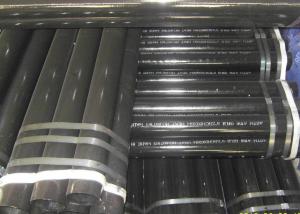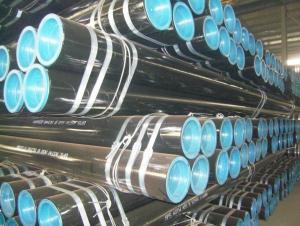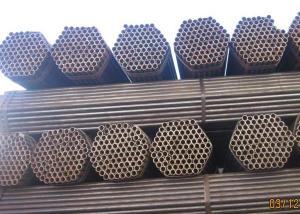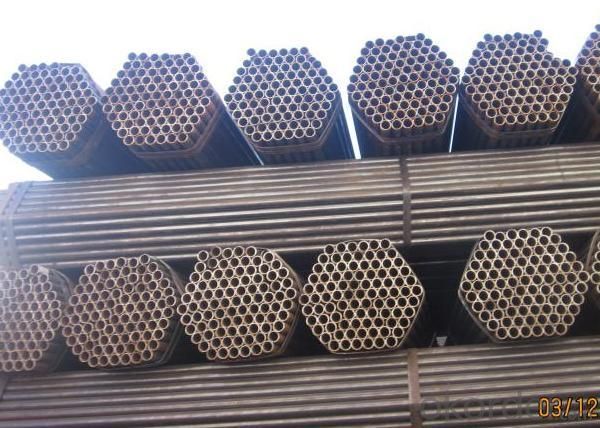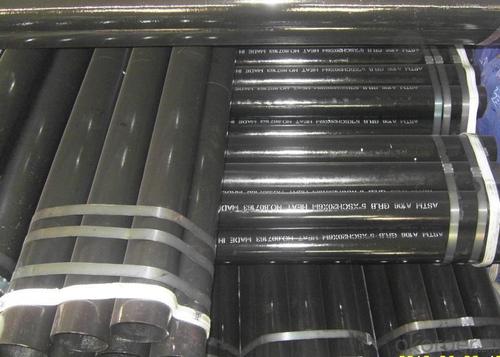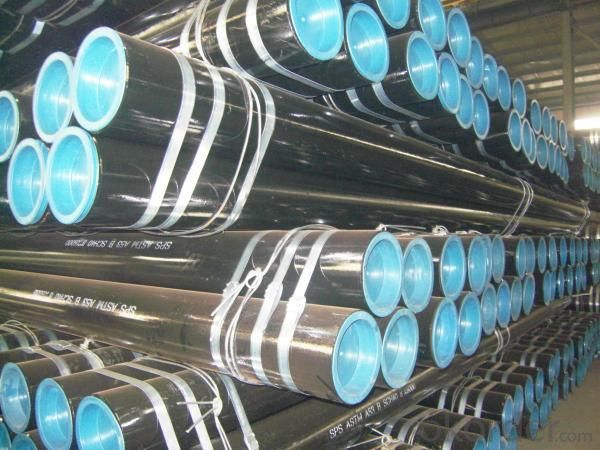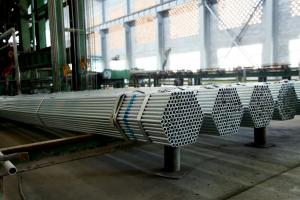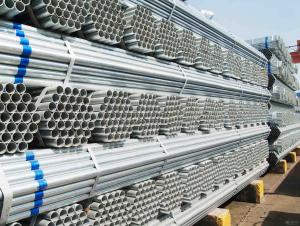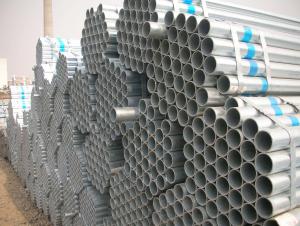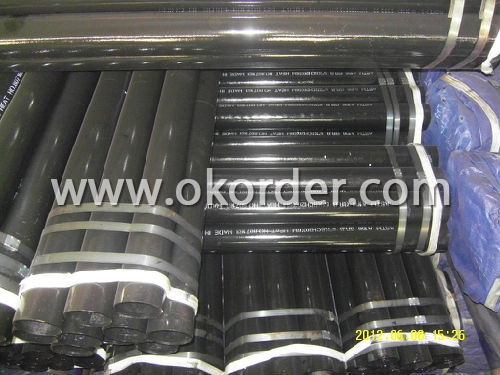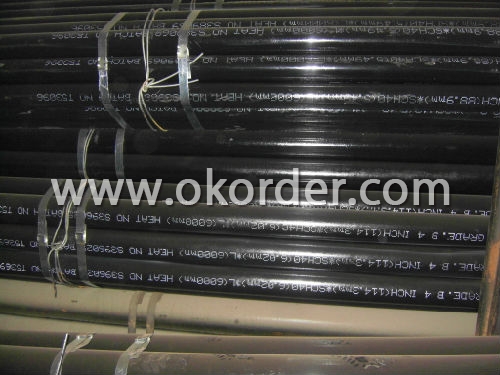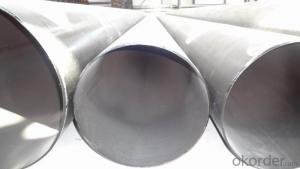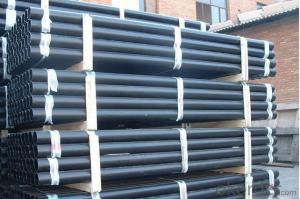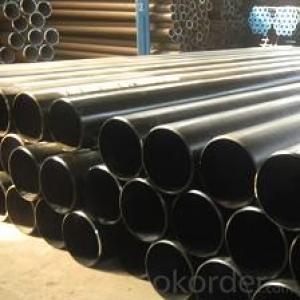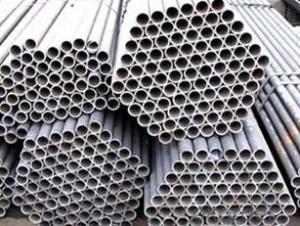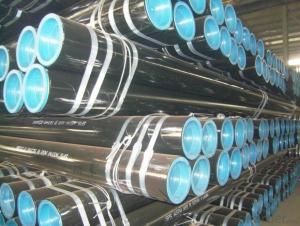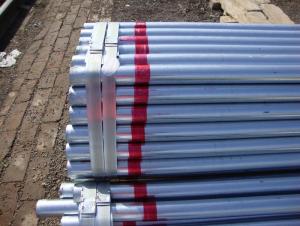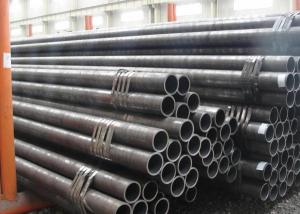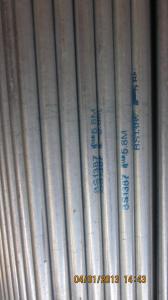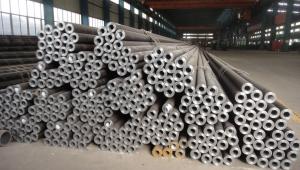Seamless Line Pipe X65
- Loading Port:
- Tian Jin Port
- Payment Terms:
- TT or LC
- Min Order Qty:
- 50MT m.t.
- Supply Capability:
- 5000 Tons Per Month m.t./month
OKorder Service Pledge
OKorder Financial Service
You Might Also Like
| |||||||||||||||||||||||||||||||||||||||||||||||||||||||||||||||||||||||||||||||||||||||||||||||||||||
|
- Q: How are steel pipes protected against electrolytic corrosion?
- Various methods can be employed to safeguard steel pipes against electrolytic corrosion. One commonly utilized approach involves the application of protective coatings on the pipe's surface. These coatings serve as a barrier, effectively preventing direct contact between the steel and the surrounding environment, which may contain moisture and other corrosive substances. Epoxy, polyethylene, and zinc are frequently employed coatings for this purpose. Another means of protection involves the utilization of sacrificial anodes. These anodes, typically fabricated from a metal that exhibits greater reactivity than steel, such as zinc or aluminum, are affixed to the steel pipes. Over time, as these anodes corrode, they willingly sacrifice themselves in order to shield the steel. This process, known as cathodic protection, is exceptionally successful in deterring electrolytic corrosion. Aside from coatings and sacrificial anodes, proper insulation and electrical isolation play a pivotal role in preventing electrolytic corrosion of steel pipes. Insulating materials, such as rubber or plastic sleeves, are employed to prevent direct contact between the pipes and other metals or electrolytes. Electrical isolation can be achieved through the use of dielectric unions or insulating flanges, which effectively obstruct the flow of electric current between different sections of the pipeline. Furthermore, regular maintenance and inspection are essential components of protecting steel pipes against electrolytic corrosion. Regular checks to assess coating integrity, anode condition, and potential electrical leakage are crucial in maintaining the ongoing efficacy of the corrosion protection system. In conclusion, a combination of protective coatings, sacrificial anodes, insulation, electrical isolation, and regular maintenance is indispensable in safeguarding steel pipes against electrolytic corrosion. By implementing these measures, the lifespan of steel pipes can be substantially prolonged, thereby ensuring the safety and reliability of various applications, including water distribution, oil and gas transportation, and structural support in buildings and infrastructure.
- Q: How are steel pipes used in desalination plants?
- Steel pipes are used in desalination plants to transport and distribute the seawater and treated water throughout the facility. They are durable and resistant to corrosion, ensuring the efficient and reliable movement of water in the desalination process.
- Q: What is the difference between seamless and ERW steel pipes?
- Seamless steel pipes are made without any welded joints, resulting in a uniform and continuous structure. On the other hand, ERW (Electric Resistance Welded) steel pipes are created by welding the edges of the steel strip or coil together, forming a seam. This seam may be visible on the surface of the pipe. While seamless pipes are considered stronger and more reliable due to their uniform structure, ERW pipes are more cost-effective and commonly used for low to medium pressure applications.
- Q: What are the different methods of joining steel pipes for high-pressure applications?
- The different methods of joining steel pipes for high-pressure applications include welding, threaded connections, flanged connections, and grooved connections. Welding involves fusing the ends of the pipes together using heat, creating a strong and leak-proof joint. Threaded connections involve screwing the pipes together, using threads on the ends of the pipes and pipe fittings. Flanged connections involve using flanges, which are flat, circular discs with bolt holes, to connect the pipes together. Grooved connections involve using grooved couplings that grip the ends of the pipes and are secured with bolts, creating a reliable and easy-to-install joint.
- Q: How to establish a concrete-filled steel tubular column model in ANSYS?
- A two unit model or a composite unit model can be adoptedTwo units are constructed of steel tubes and concreteA composite unit may be either a fiber element or a section conversion attribute
- Q: How can steel pipes be protected from corrosion?
- Steel pipes can be protected from corrosion through various methods such as applying protective coatings, using cathodic protection techniques, implementing proper maintenance and inspection procedures, controlling water chemistry, and utilizing corrosion inhibitors.
- Q: What kind of argon arc welding wire is used for 16Mn steel pipe?
- 16Mn steel belongs to carbon manganese steel, the content of carbon is about 0.16%, and the yield point is equal to 343MPa (strength grade is 343MPa). 16Mn steel alloy content is less, good weldability, welding generally without preheating. But because the 16Mn steel hardened tendency is slightly larger than the low carbon steel, so at low temperatures (such as winter outdoor operations) or welding in high rigidity, large thickness of the structure, in order to prevent the cold crack, need to take measures to preheat.
- Q: How are steel pipes protected against fire?
- Steel pipes are protected against fire through various methods such as applying intumescent coatings, using fire-resistant insulation, or encasing them in fire-rated enclosures. These measures help to delay the heat transfer and maintain the structural integrity of the pipes during a fire, allowing them to withstand high temperatures and prevent the spread of fire.
- Q: Can steel pipes be used for the construction of dams?
- Yes, steel pipes can be used for the construction of dams. Steel pipes are often used in dam construction for various purposes such as water intake and outlet structures, penstocks, and spillway gates. They offer durability, strength, and resistance to corrosion, making them suitable for withstanding the high pressures and harsh environments associated with dam construction.
- Q: How are steel pipes used in the manufacturing of irrigation systems?
- Steel pipes are commonly used in the manufacturing of irrigation systems due to their durability, strength, and resistance to corrosion. These pipes are used to transport water from a water source to the fields or crops, ensuring a reliable and efficient irrigation process. The steel pipes also provide stability and support to the system, allowing for the proper distribution of water to the desired areas.
1. Manufacturer Overview
| Location | Hebei, China |
| Year Established | 1990 |
| Annual Output Value | Above 30 milionrmb |
| Main Markets | Germany; Japan;Korea; America; Brasil; Canada |
| Company Certifications | ISO9001:2000 ; API |
2. Manufacturer Certificates
| a) Certification Name | |
| Range | |
| Reference | |
| Validity Period |
3. Manufacturer Capability
| a) Trade Capacity | |
| Nearest Port | Tianjin; Qingdao |
| Export Percentage | 50% |
| No.of Employees in Trade Department | Above 10 |
| Language Spoken: | English; Chinese |
| b) Factory Information | |
| Factory Size: | 8,5000square meters |
| No. of Production Lines | Above 10 |
| Contract Manufacturing | OEM Service Offered; Design Service Offered |
| Product Price Range | High Average |
Send your message to us
Seamless Line Pipe X65
- Loading Port:
- Tian Jin Port
- Payment Terms:
- TT or LC
- Min Order Qty:
- 50MT m.t.
- Supply Capability:
- 5000 Tons Per Month m.t./month
OKorder Service Pledge
OKorder Financial Service
Similar products
Hot products
Hot Searches
Related keywords
